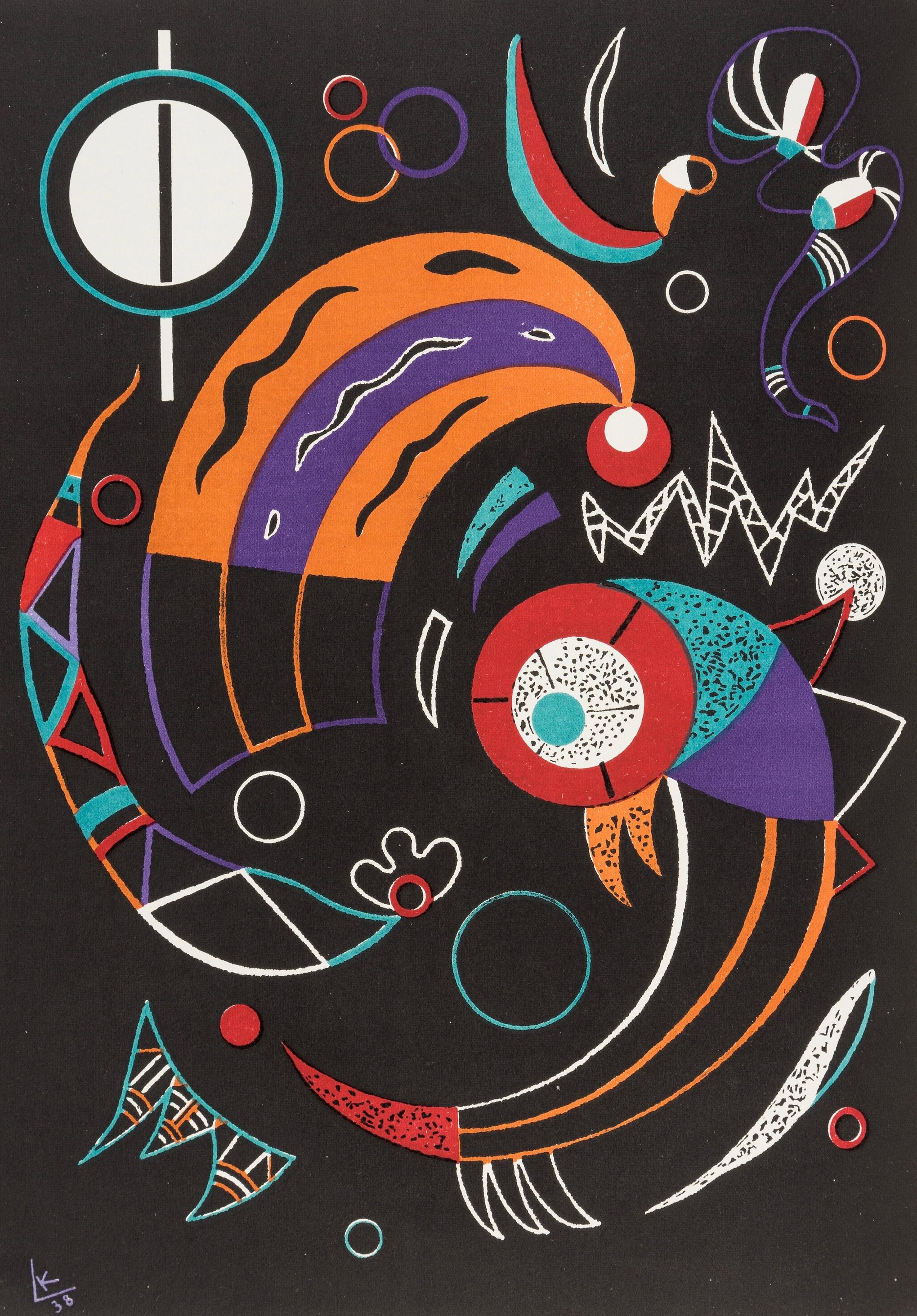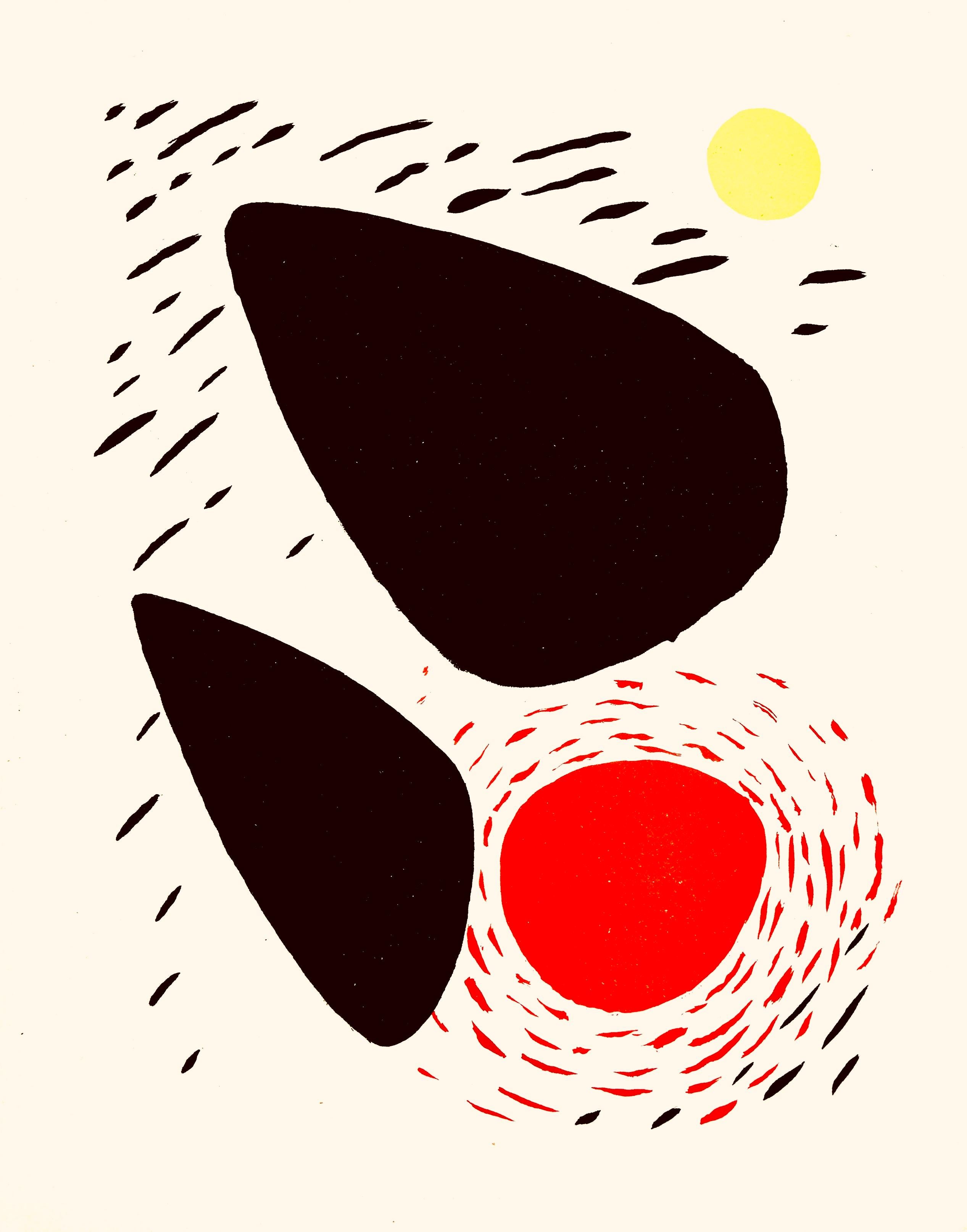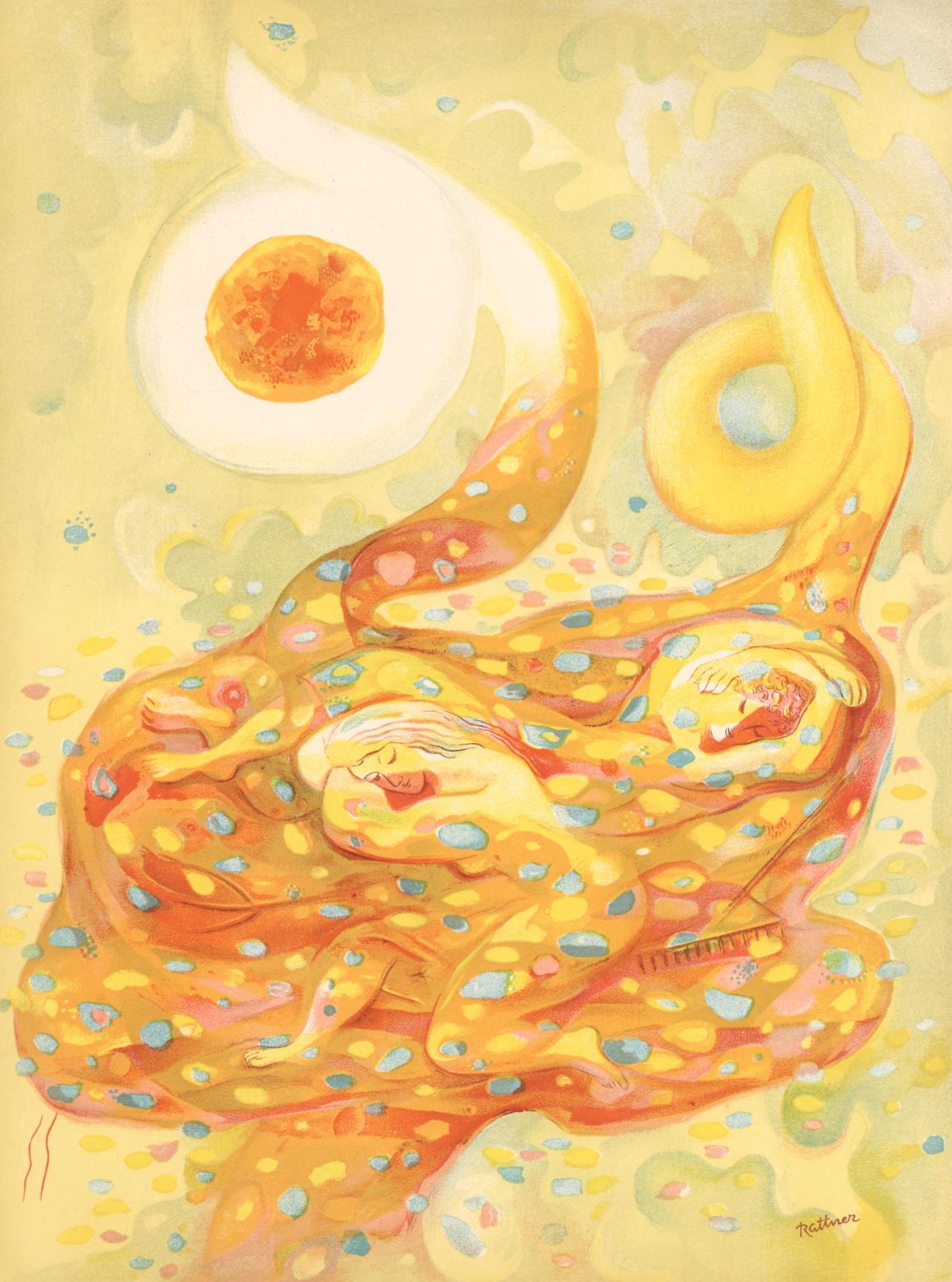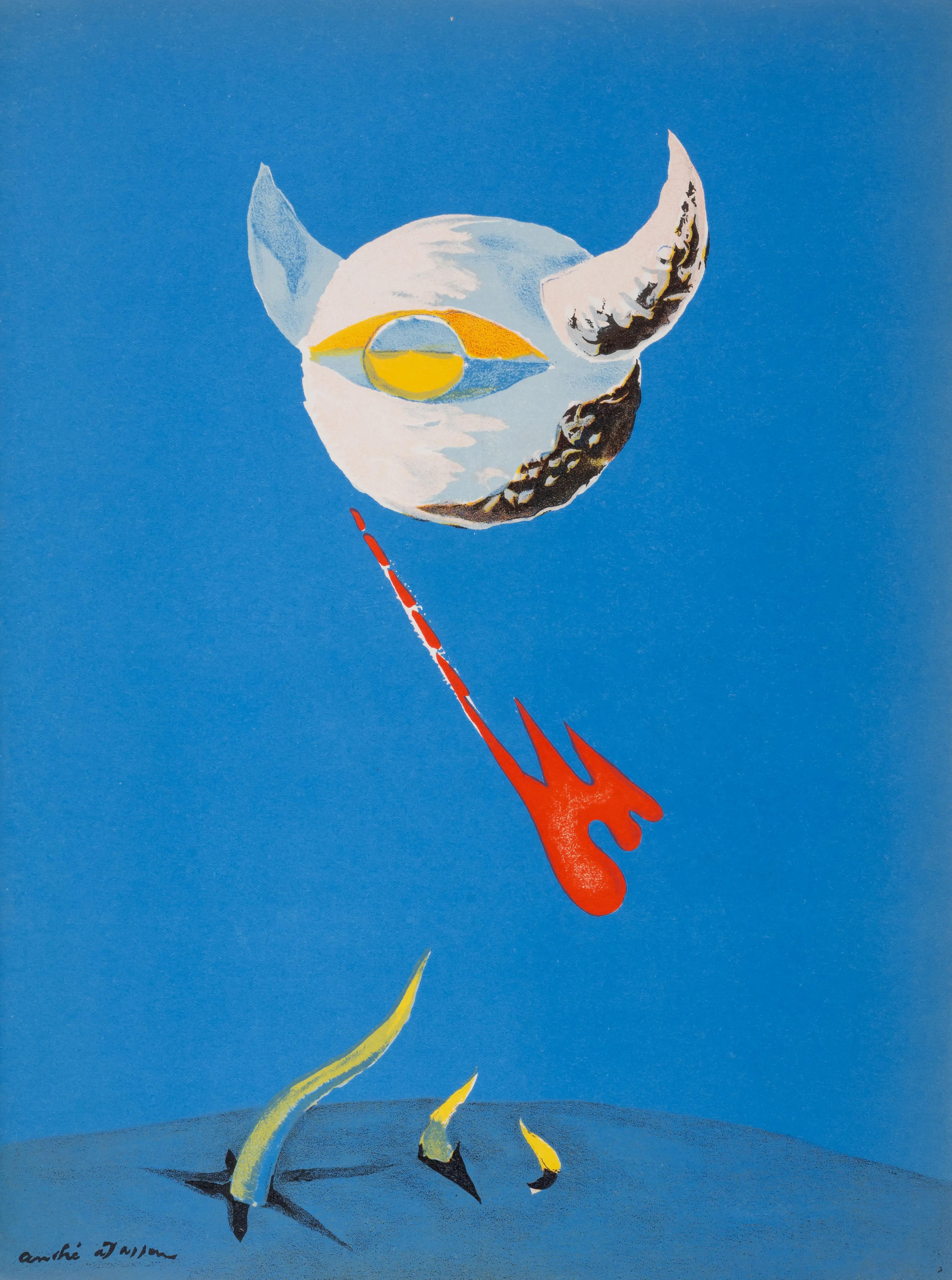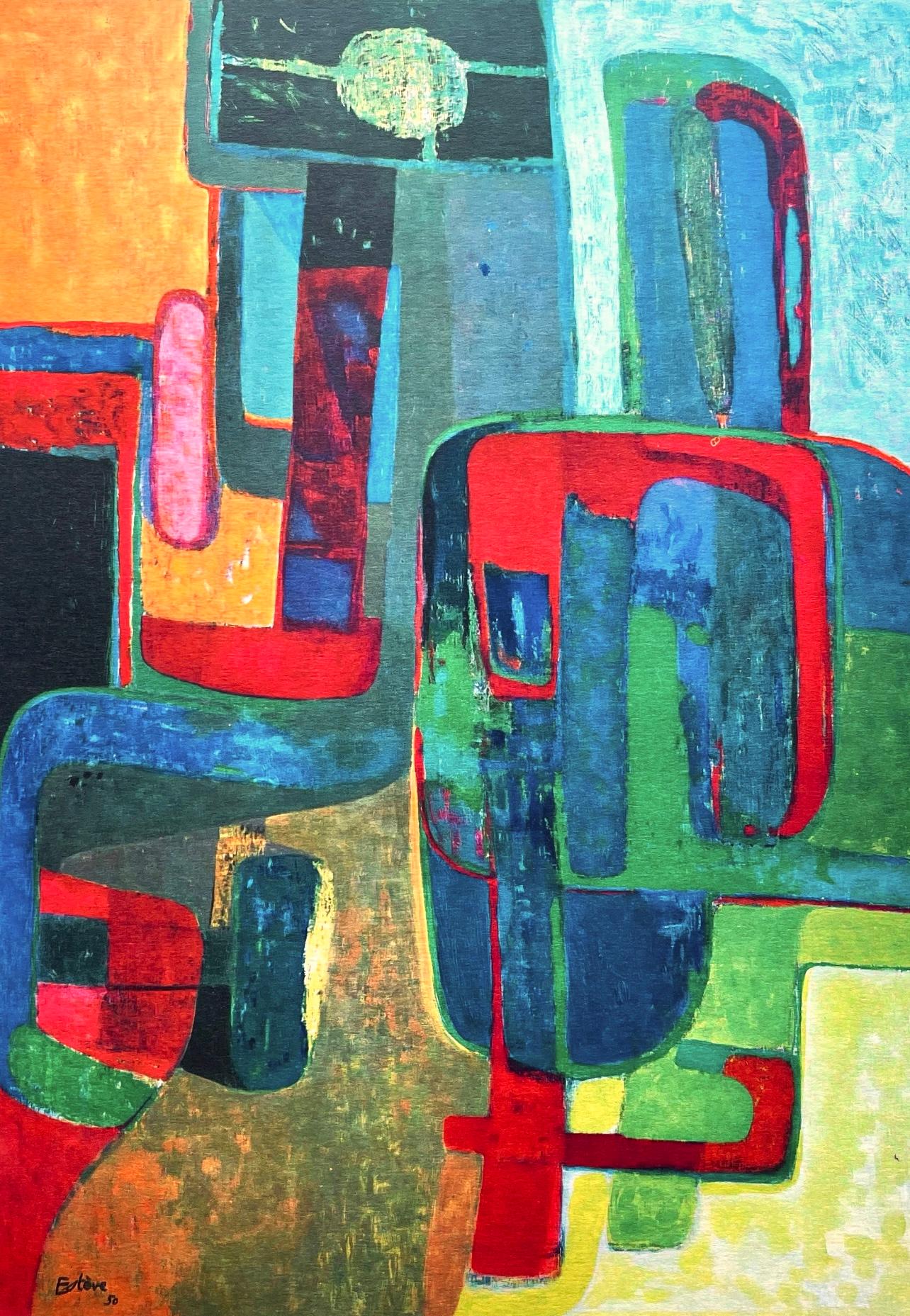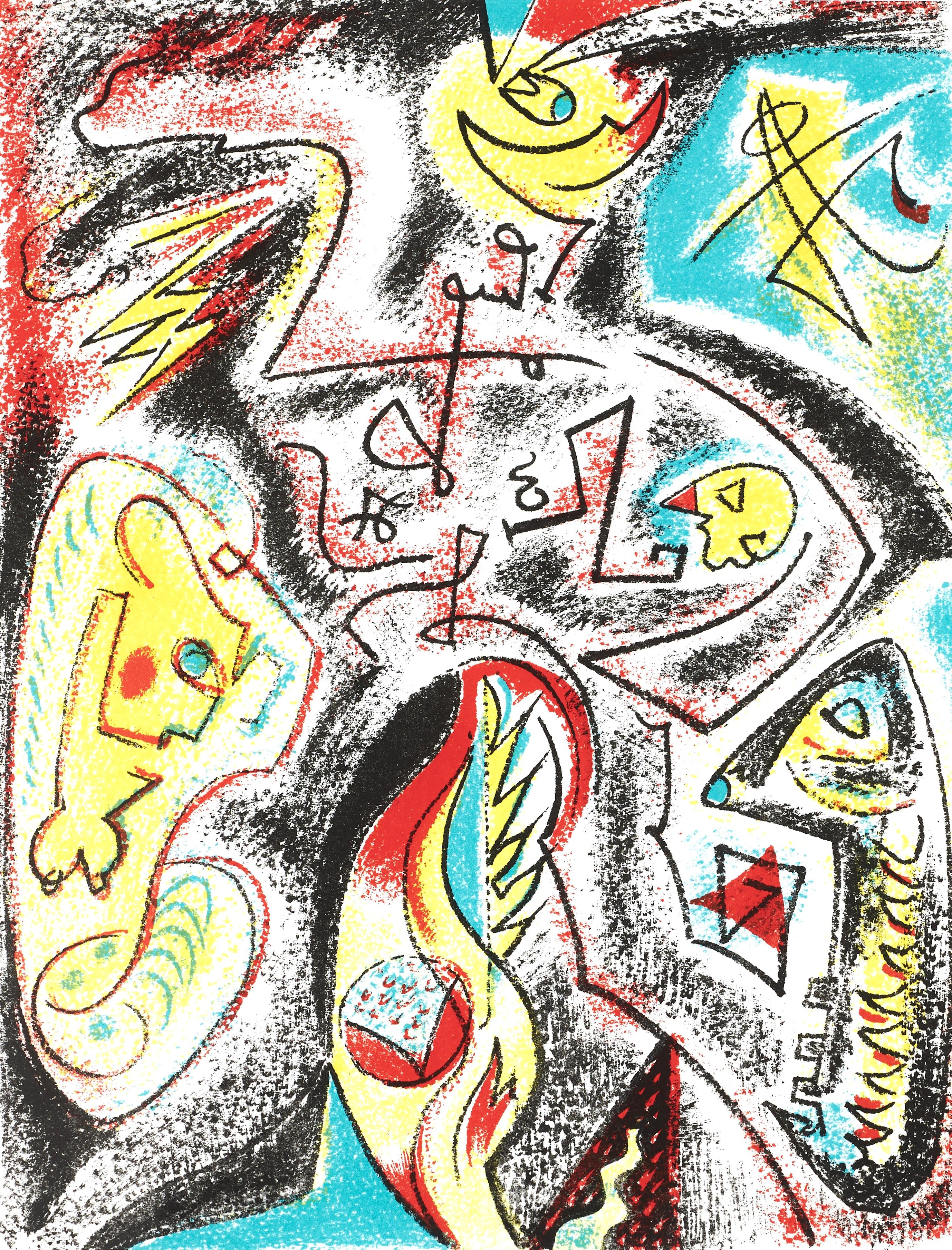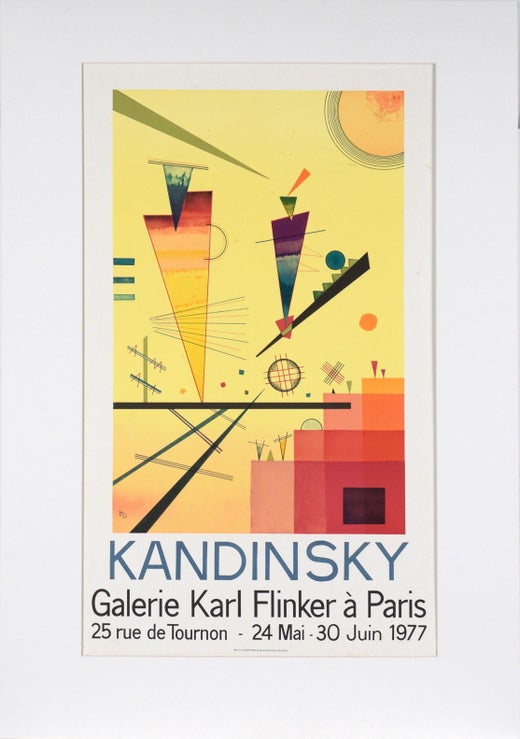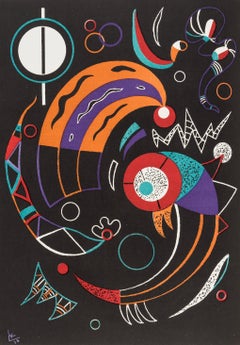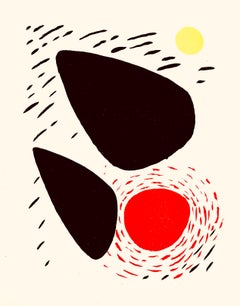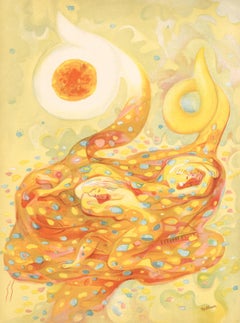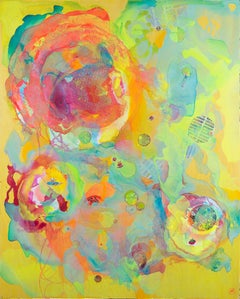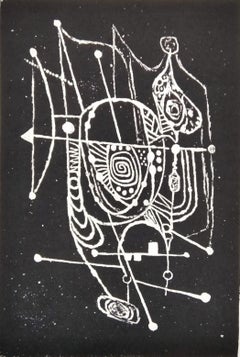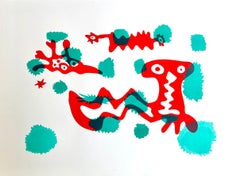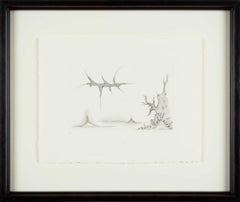Wassily KandinskyLes étoiles, Verve: Revue Artistique et Littéraire1938
1938
Angaben zum Objekt
- Schöpfer*in:Wassily Kandinsky (1866 - 1944, Russisch)
- Entstehungsjahr:1938
- Maße:Höhe: 35,56 cm (14 in)Breite: 26,04 cm (10,25 in)
- Medium:
- Bewegung und Stil:
- Zeitalter:
- Zustand:
- Galeriestandort:Southampton, NY
- Referenznummer:1stDibs: LU1465216344802
Wassily Kandinsky
"Farbe ist ein Mittel, um einen direkten Einfluss auf die Seele auszuüben", schrieb der bahnbrechende abstrakte Künstler Wassily Kandinsky. Der in Russland geborene Maler und Theoretiker widmete sein Leben der Verwendung abstrakter Form- und Farbkompositionen, um tiefe Emotionen auszudrücken und die Sprache der Musik durch Bilder darzustellen.
Kandinsky war Teil eines entscheidenden Moments in der Kunstgeschichte - dem frühen 20. Jahrhundert -, in dem Bewegungen wie Kubismus aufkamen. Er vertrat Stile wie Surrealismus und Fauvismus und war eine führende Figur bei der Zusammenführung von Der Blaue Reiter (der Name bedeutet "Der Blaue Reiter" nach einem Gemälde von Kandinsky) im Jahr 1911, einer Gruppe von Avantgarde-Künstlern in München, darunter Paul Klee und Franz Marc, die spirituelle Konzepte durch ihre Kunst als Reaktion auf den Materialismus der Zeit erforschten. Kandinsky leitete auch Kurse über analytisches Zeichnen und Farbe am Bauhaus. Der Gründer und Architekt Walter Gropius berief ihn 1922 als Lehrer nach Weimar . Er unterrichtete unter an allen drei Standorten der legendären Schule und blieb unter der Institution bis zu ihrer erzwungenen Schließung durch die Nazi-Partei in Berlin erhalten.
Der Künstler hatte die seltene und ungewöhnliche Eigenschaft der Synästhesie, der neurologischen Fähigkeit, Dinge mit mehreren Sinnen wahrzunehmen. In Kandinskys Fall war es die Gabe, Musik zu "sehen", und Musik tauchte in jedem Aspekt seines Werks auf, auch in den Titeln seiner Serien "Kompositionen", "Improvisationen" und "Impressionen". Die Erfahrung des Malens beschrieb er einmal mit einer musikalischen Metapher: "Ich dachte wenig über Häuser und Bäume nach, zeichnete mit meinem Spachtel farbige Linien und Kleckse auf die Leinwand und ließ sie so kraftvoll singen, wie ich es konnte."
Kandinsky ist zwar nicht der erste abstrakte Künstler - die mystisch veranlagte Malerin Hilma af Klint hat schon lange vor ihm ungegenständliche Kunst geschaffen -, aber er hatte sicherlich den größten Einfluss auf die Etablierung des Stils. Seine Bilder inspirierten unter anderem Jackson Pollock, Willem de Kooning und andere Abstrakte Expressionisten. Von seinem 1910 gemalten Ohne Titel (Erstes abstraktes Aquarell) bis hin zu seinen späteren Werken, seinem einzigartigen Umgang mit Farbe und seinem Gespür für kühne, experimentelle Kompositionen ist Kandinsky eine der wichtigsten Figuren der Kunst des frühen 20. Jahrhunderts.
Finden Sie original Wassily Kandinsky Kunst, einschließlich Gemälde und Drucke, auf 1stDibs.
- VersandAngebot wird abgerufen …Versand von: Southampton, NY
- Rückgabebedingungen
Mehr von diesem*dieser Anbieter*in
Alle anzeigen1930er, Moderne, Abstrakte Drucke
Lithografie
1950er, Surrealismus, Abstrakte Drucke
Lithografie
1930er, Surrealismus, Abstrakte Drucke
Lithografie
1930er, Moderne, Abstrakte Drucke
Lithografie
1960er, Moderne, Abstrakte Drucke
Lithografie
1960er, Surrealismus, Abstrakte Drucke
Lithografie
Das könnte Ihnen auch gefallen
2010er, Zeitgenössisch, Abstrakte Gemälde
Holz, Mixed Media
1970er, Abstrakt, Abstrakte Drucke
Lithografie
2010er, Abstrakt, Abstrakte Drucke
Siebdruck
1950er, Surrealismus, Abstrakte Drucke
Baumwolle, Papier, Kaltnadelradierung, Radierung
1970er, Abstrakt, Abstrakte Drucke
Lithografie
Ende des 20. Jahrhunderts, Abstrakt, Abstrakte Drucke
Holzschnitt
